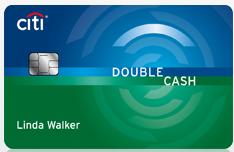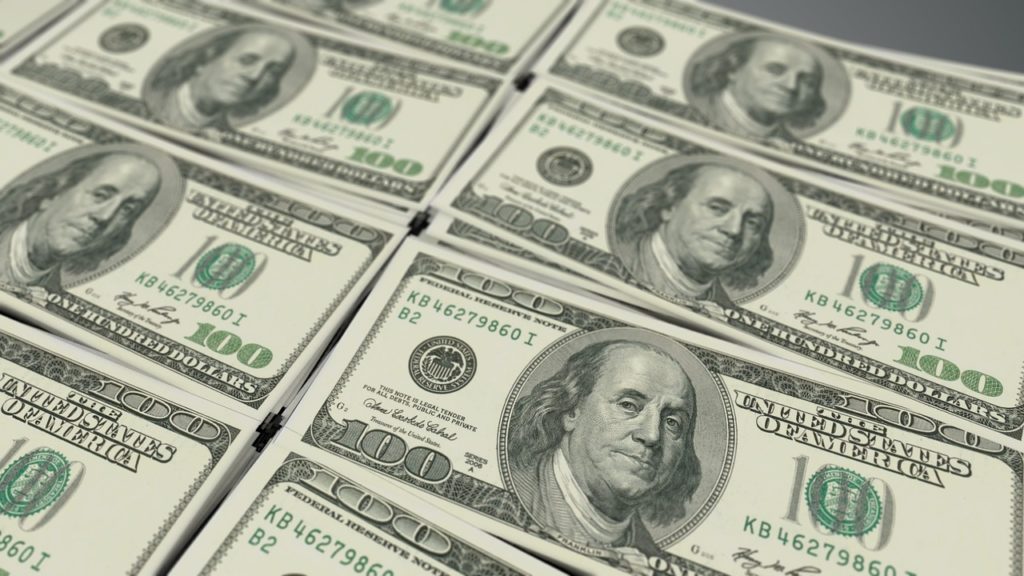In the award travel world, the bulk of the credit card focus is generally on cards that earn transferable points, airline miles or hotel points. Especially popular are cards that give you additional perks, such as Priority Pass membership and hotel elite status, simply for holding them. It’s definitely true that I like the Chase Sapphire Reserve card that occupies a spot in my wallet, and also the new World of Hyatt Visa, which currently receives much of my usage.
But you know what else is a fixture in my wallet? My Citi DoubleCash card, which earns plain ol’ boring cash. Yet it is critical cash.
(Check out our list of top cash back cards here)
With no annual fee and offering 2% cash back on all purchases, the Citi DoubleCash is the baseline against which I measure any of my spend. There may be reasons to use other cards that earn less, such as meeting minimum spend for a large bonus or earning elite nights by using my World of Hyatt card, but in general, I better be getting at least 2% in value back on every swipe.
And sometimes you just can’t beat cash back, even when you could be earning points of equivalent value. Here are four reasons why:
For those “extra” costs
My cash back card functions as a “fix it and forget it” card. It gets a few swipes per month at places offering no bonus points and has some recurring spend assigned to it. Sometimes I’ll throw some extra reselling spend its way as well. This always ensures there is a bit of cash available to be redeemed when we need it most.
Maybe we ate out one too many times on a trip. Or maybe we had to take an Uber instead of public transportation a few times, such as when my son and I visited Seattle in February and didn’t know the monorail doesn’t operate all that late. Having cash back available helps keep the travel budget in check during moments like these.
Sure, this is cash that could be used for other things, but it is out of sight and out of mind until we need it to help with travel costs. It is cash that is external to the general budget, and I try to have a small stash available between our DoubleCash and Discover cards. It comes in handy for the travel extras.
For deals only available with cash
It’s nice to have a bunch of miles, but sometimes the best deals are the cash ones, such as using the Alaska 2-for-1 certificate, which must be booked directly throughout Alaska, so I can’t even use flexible points. Other “cash” deals can be found through the Chase travel portal, for example. But sometimes the cheapest fares are available through another avenue.
For cash deals, I still like to pay for them using a card that earns additional points and also has trip cancellation and interruption protections. I wouldn’t straight up buy a plane ticket with my DoubleCash card. Instead, I would put it on my Chase Sapphire Reserve, but then cash out what I need from the DoubleCash as a direct deposit to cover the expense. This lets me take advantage of a cash deal while also getting the protection of a premium travel card.
To have something for non-travel needs
Having over 200,000 Delta miles is nice, but his doesn’t help if we have an unexpected medical bill or other expense. I can’t just offload those for cash, or offer them to the hospital in exchange for emergency services.
Having a reserve of cash back is nice in case “life happens” and we end up needing to cash out our credit card rewards for non-travel reasons. Generally we don’t have more than a few hundred dollars available at a given time, so it’s not like it operates as a true reserve fund. But at least something is there in a pinch.
Because you simply can’t beat 5x
I try to max out the rotating 5x categories on my Chase Freedom and Discover cards every quarter. This ensures we have a nice reserve of cash back whenever we need it. The Freedom points in reality get transferred to my Chase Sapphire Reserve Ultimate Rewards account, but the spending principle is the same: very little can beat 5% cash back.
When restaurants are the 5% category for the Discover card, I end up using that for restaurant spend over my Chase Sapphire Reserve. The return when used for travel booked through Chase is 4.5% (3 points per dollar, redeemed at 1.5 cents each), so earning 5% is better at face value. The flexibility of cash seals the deal.
Conclusion
While cash back cards don’t get as much of the limelight, I would absolutely pick one up that earns at least 2% back, even if you don’t receive a sign-up bonus. The DoubleCash has previously offered a $150 sign up bonus, but this offer is no longer available. A card that I have eyed for a while is the Alliant Visa, which earns 3% back on everything your first year, and then 2.5% back thereafter. This is the highest ongoing cash back card I know of.
I know that American Express Platinum looks snazzy in your wallet, but I hope the ol’ DoubleCash gets more everyday use.
Points With a Crew has partnered with CardRatings for our coverage of credit card products. Points With a Crew and CardRatings may receive a commission from card issuers. Responses are not provided or commissioned by the bank advertiser. Some or all of the card offers that appear on the website are from advertisers and that compensation may impact on how and where card products appear on the site. Any opinions expressed in this post are my own, and have not been reviewed, approved, or endorsed by my advertising partners and I do not include all card companies, or all available card offers. Terms apply to American Express benefits and offers and other offers and benefits listed on this page. Other links on this page may also pay me a commission - as always, thanks for your support if you use them
User Generated Content Disclosure: Points With a Crew encourages constructive discussions, comments, and questions. Responses are not provided by or commissioned by any bank advertisers. These responses have not been reviewed, approved, or endorsed by the bank advertiser. It is not the responsibility of the bank advertiser to respond to comments.




 Dan Miller travels with his wife and 6 (SIX!) children. He loves to help families travel for free / cheap, especially larger families. If you are looking for help, drop him an email at
Dan Miller travels with his wife and 6 (SIX!) children. He loves to help families travel for free / cheap, especially larger families. If you are looking for help, drop him an email at 
I list 8 2% cash back cards, all with no annual fee ever. My favorite is the one from the State Department Federal Credit Union, because it does not have a fee for foreign transactions.
That is an amazing perk. I’d almost certainly keep that in the wallet for non-bonus spend when abroad.
Most can be good for signup bonus then…
This is amazing info bro….because so many friends of mine are overlook or care about these cashbacks. and they didn’t get back that much amount that they are expected. Thanks for letting us know about this important info.